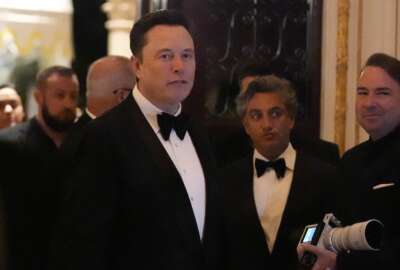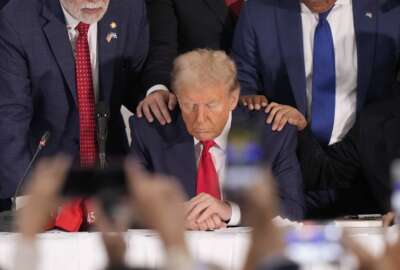NASA shows how federal work is often life in a fishbowl
NASA enjoys high ratings from the public and its employees. Its approach to having astronauts stuck at the Space Station bolsters that confidence.
Two astronauts at the Space Station won’t come home on their original schedule because their celestial Uber has issues. The episode exemplifies the way federal governmental events — our national events — so often play out in the national fishbowl.
You know the story, a real drama. The beleaguered Boeing company’s Starliner space capsule developed leaks, and NASA engineers don’t like the smell of it. The Starliner had taken the two astronauts to the Space Station. It parked there until the presumed return. It’s as if Barry Wimore and Sunita Williams had driven to Walmart and the Kia’s tires went flat while it sat outside.
Is this a case of government-contractor incompetence? No, it’s a demonstration of risk management in a situation in which human lives are at risk. And it all takes place very publicly.
Whether NASA decision-makers take a chance on the Starliner may appear as a simple decision. In reality, NASA must make carefully calibrated judgments on nerves of steel. That and data open to interpretation, emanating from the Starliner. After all, the whole idea of launching rockets topped with people is kind of a massive risk to begin with. When you think about it, once astronauts climb into the Starliner or any spacecraft, no subsequent decision in fact carries zero risk to human life.
Boeing has professed confidence in the Starliner it took years to build. NASA flight brass — with institutional memories going back to Space Shuttle Challenger — aren’t having it. It’s one thing to slip the surly bonds of earth to touch the face of God; it’s something else to get back safely.
The Starliner will depart, and, one hopes, return, one way or the other. Imagine having to balance four possible scenarios:
- Starliner departs the Space Station empty, but makes Earth safely — waste.
- It departs empty but burns up in space — wise decision.
- It leaves with the crew but burns up or spins out in space — tragedy, hearings next week.
- It leaves with the crew and makes it back — what was the fuss?
That’s risk management.
While not surprisingly, given how much commercialization of space has advanced, but perhaps remarkably: NASA has a backup plan. A September SpaceX launch could carry aloft another vehicle with room to take Wilmore and Williams back home. The plan has just one drawback: Their return wouldn’t happen until early 2025. There goes the Carribbean cruise for Christmas, but it beats the alternative. As of this writing, the final decision is up in the air, so to speak. I read the Space Station has plenty of food and water aboard.
I mentioned the Challenger, one of those tragic events you remember where you were when you heard it. I was at the bar in the Stockyard restaurant in Watertown, Massachusetts, a popular lunch spot for people the company I was working for back in 1986. NASA and contractor people, it turned out, had sort of glossed over something that had made a few people extremely wary. Namely, the prior night’s freeze they suspected spoiled the o-rings on the rocket motors.
In truth, it was a top-to-bottom managerial failure resulting in a bolt-the-doors ending. A nearly three-year period of hearings, studies, soul-searching, and program interruption ensued. I can sense the learnings in the briefings statements from NASA Associate Administrator Ken Bowersox, himself a five-time Shuttle flyer, according to his NASA bio.
A public opinion survey by the Partnership for Public Service shows how low confidence in government has fallen. A sad picture, but not a startling one. Two-thirds of the people think the government is incompetent. Only 29% say democracy, no less, is working.
I think people are thinking of the politicians when they consider government. They see and hear the ceaseless and undignified insults back and forth, the waste coming to light in the vast entitlement programs, the exploding debt. NASA has its share of late and over-budget programs and managerial shortfalls. Yet because of its decades of mission success, it enjoys consistent approbation both from the public and from its own employees. The current space snafu may explain why.
Copyright © 2024 Federal News Network. All rights reserved. This website is not intended for users located within the European Economic Area.
Tom Temin is host of the Federal Drive and has been providing insight on federal technology and management issues for more than 30 years.
Follow @tteminWFED







